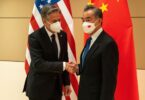Power division is working on a National Electricity Policy, which will be finalized after consultation with provincial governments. The policy is aimed at lowering generation cost by reducing reliance on expensive imported fuel, maximum optimal utilisation of indigenous reserves of coal, gas and renewable resources such as water, air and solar. The issue of accumulating arrears of Power Distribution Companies will also be addressed by at source deductions from the disbursements financial resources to federating units under National Finance Commission Award. It merits mention that last PML-N government wanted to make at source deduction before transferring funds to provincial governments through mechanism of federal adjuster for power sector receivables from provinces. But the mechanism was never made operational after the payment of Rs.485 billion circular debt and left a legacy of Rs.1.3 trillion circular debts to the present government. It remains to be seen how the incumbent government succeeds in the recovery of power sector receivables from the provincial governments.
The inflated electricity tariff agreed with IPPs, payments for idle capacity charges to them and lack of political will to take strong action against the running and new electricity bills defaulters are the major factors of bulging circular debt, giving leverage to IMF to press for amendment in the NEPRA Act to end the role of government in periodic electricity tariff hikes that hit hard all categories of consumers. The unaffordable tariff hikes will certainly depress the demand for electricity. After the completion of ongoing coal based thermal and hydel power projects, a surplus of 4000 megawatt will come up. It will necessitate lowering of tariff to boost demand for electricity consumption.
The induction of inexpensive electricity generation from hydel and other renewable sources may help achieve an optimal energy mix. But the bitter fact remains’ that power tariff hikes continues even after injection of 2400 megawatt cheap hydel electricity in the national grid from Neelum Jhelum and Tarbela Extension-4 power stations. Will generation of low cost electricity from locally available coal reserves, hydel and other renewable resources lead to tariff reduction to the affordable level, which inevitable for increasing demand for its consumption by domestic, commercial and industrial consumers? The hydra headed monster of circular debt will not go away until the shady power purchase agreements made with IPPs are reviewed to exclude the capacity trap clause, indexation of thermal power tariff to US dollars on the pretext of exchange rate volatility and arrears of electricity bills are recovered from the influential defaulters.






